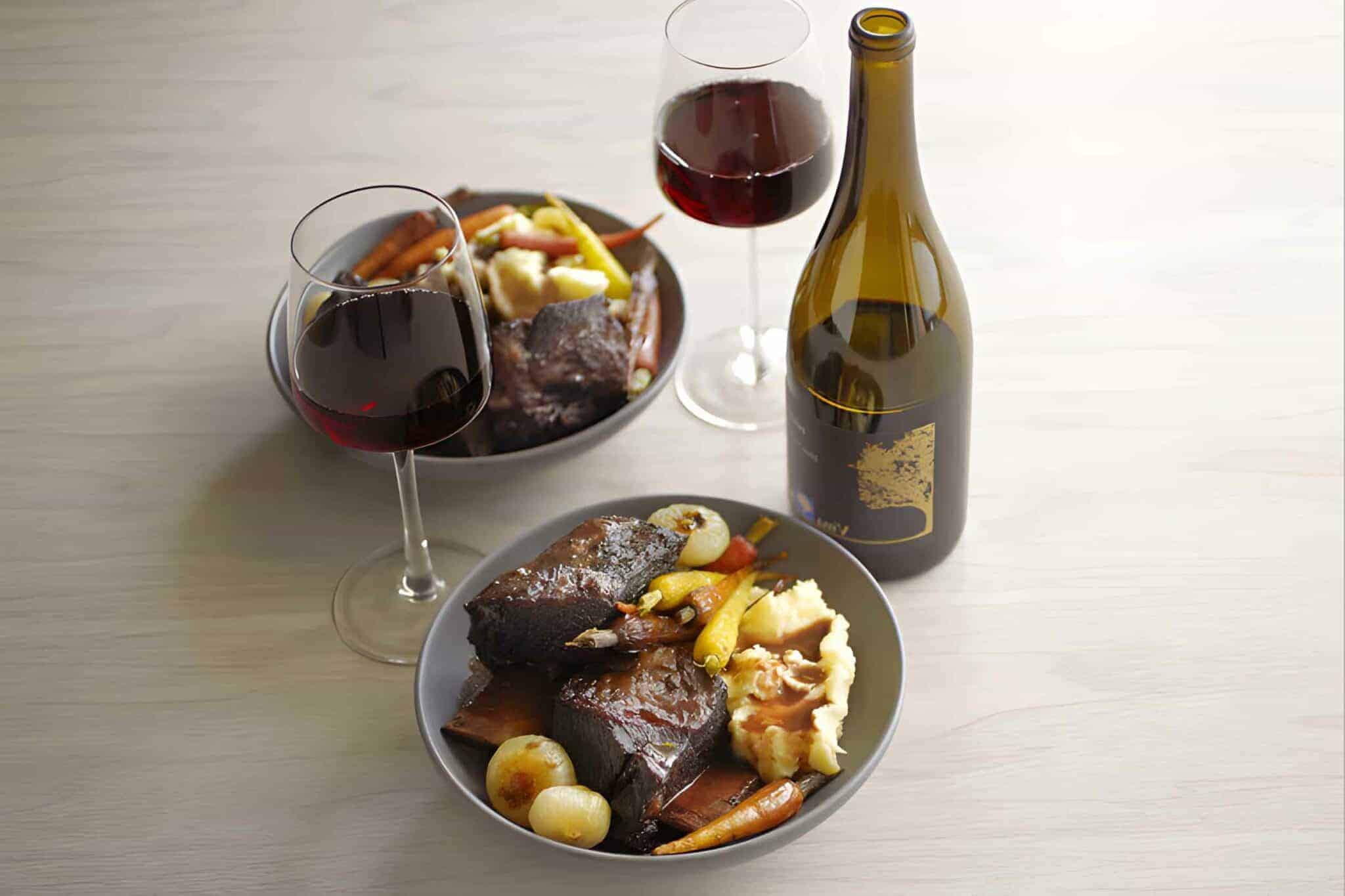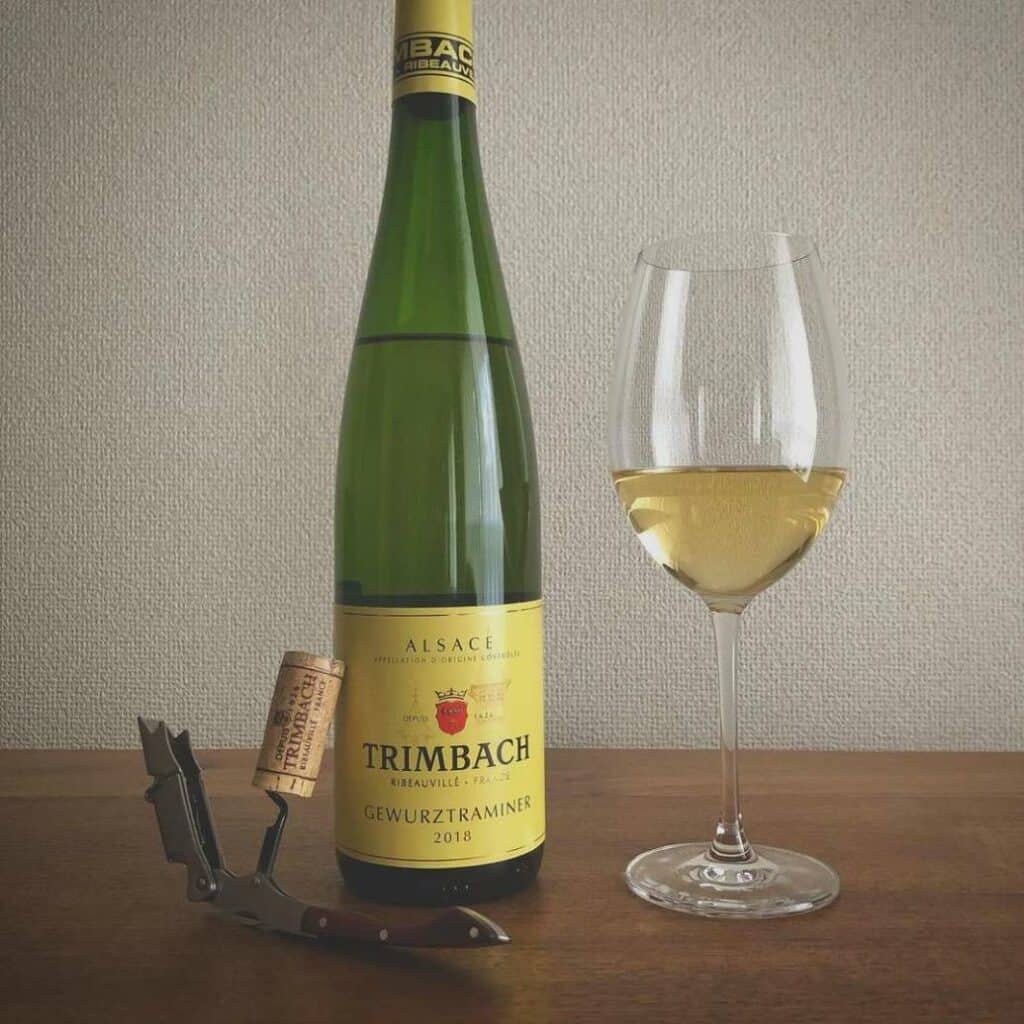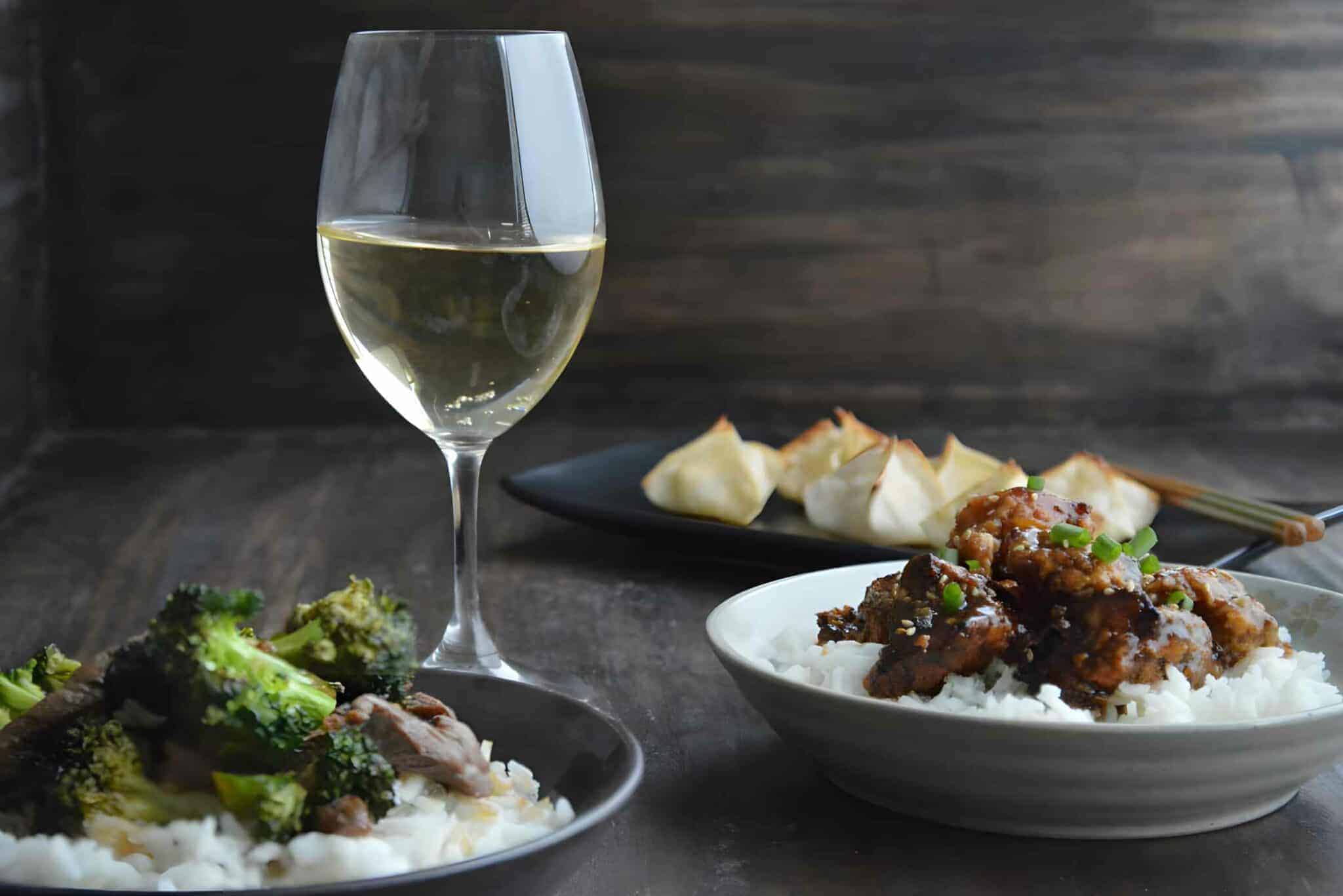Do wine and Chinese cuisine go together? Definitely!
However, as you probably already know, there are many types of wines and Chinese dishes out there. It can be overwhelming figuring out what wine goes well with what meal. Well, you do not have to worry. We have simplified everything and have chosen five wines for you to try out with your favorite Chinese dishes!
So, what wine goes with Chinese food? Well, let’s answer that now!
1. Riesling
There are many types of wine out there. On the other hand, there are also many types of Chinese food too. Additionally, the different wines and Chinese food come in different flavors. As you can imagine, not everyone agrees on what works with what. Except for one thing, though.
Most – if not everyone – agrees that riesling works with any Chinese food.
An off-dry riesling can work well for dim sum. On the other hand, a sweeter one is ideal for sweet dishes, and you might want to hunt down a vintage for those with spiced sauces. However, as this wine is generally highly acidic, any riesling will likely work for the greasy favorites.
Despite all that, feel free to experiment with the different rieslings. As we have said, not everyone agrees with what works with what.
While many agree that riesling is a good choice for Chinese food, not everyone agrees on what type works best with what. Riesling makes for an ideal choice because it allows for exploration but will always likely work.
In other words, there doesn’t seem to be a wrong answer with a riesling when it comes to Chinese cuisine. There is only a good answer and a better one.
As you can see, riesling can be a safe first choice or the one you reach for when and if all else fails. Still not sure if riesling is the best choice? Then, let’s take a quick look at its profile before moving on to the next wine.
Basic Riesling Wine Profile
Riesling is a wine that can be dry, semi-sweet, or sweet. It is highly acidic but barely tannic. On the other hand, it can have low to average alcohol levels depending on the type.
It is almost always light-bodied, but there are also full-bodied varieties of it too. Notes depend on the riesling type, but often with hints of apples, pears, and grapefruits.
Here’s everything at a glance:
| Characteristics | Riesling |
| Sweetness | Dry to Sweet |
| Acidity | High |
| Tannins | Low |
| Alcohol | Low to Average |
| Body | Light to Full |
| Notes | Apples, Pears, and Grapefruits |
2. Gewürztraminer
A common suggestion when choosing a wine to pair with Chinese cuisine is to go for German varietals. If you don’t like riesling, then the gewürztraminer can be an ideal choice.
This wine is not as popular a choice as riesling, but it can do well with an array of Chinese food too. However, it is best known paired with those with heat (e.g., Sichuan dishes) as it can help tone the heat down.
Still not sure if the gewürztraminer is the one for you? Then, let’s look at its profile before moving on to the next wine on the list.
Basic Gewürztraminer Wine Profile
The gewürztraminer can be dry, semi-sweet, or sweet. It is low in acidity and tannins. On the other hand, it has a high alcohol content. Additionally, it is full-bodied. It has a wide array of flavors and aromas, but the most notable are notes of lychee and rose petals.
Here’s everything at a glance:
| Characteristics | Gewürztraminer |
| Sweetness | Dry to Sweet |
| Acidity | Low |
| Tannins | Low |
| Alcohol | High |
| Body | Full |
| Notes | Lychee and Rose Petals |
3. Champagne
Another suggestion when choosing a wine to pair with Chinese cuisine is to say yes to the bubbles. There are many wines that have bubbles. However, there is one that dominates this area – the Champagne.
The Champagne can go with the mildly flavored dim sum. However, it can also do well with flavorful spicy dishes. Additionally, it can be an ideal choice for the fried favorites as it can do a great job cleansing the palate.
This wine can be ideal for someone with a palate that easily gets overwhelmed. The acidity of this wine can help cut the fat present in many Chinese dishes that overloads the tongue, and the bubbles can be a lovely refreshment to the mouth.
Do you want to know the Champagne better before making a decision? Then, let’s take a quick look at its profile.
Basic Champagne Wine Profile
The Champagne can be bone dry to very sweet. It is highly acidic but barely tannic. On the other hand, it has an average level of alcohol content. When it comes to the body, it can be light-bodied or full-bodied. This wine almost always gives off a burst of citrus fruits when it comes to notes.
Here’s everything at a glance:
| Characteristics | Champagne |
| Sweetness | Dry to Sweet |
| Acidity | High |
| Tannins | Low |
| Alcohol | Average |
| Body | Light to Full |
| Notes | Citrus Fruits |
4. Pinot Noir
As you might have noticed, all of the wines above are white. However, red wine lovers do not need to worry. There are also red wines that can pair with Chinese food well.
When choosing a red wine to pair with Chinese cuisine, a common suggestion is to go for a light red – like the pinot noir.
Pinot noir is one of the most popular red wines out there. With that, you will likely not have a hard time getting a hold of a bottle of it. If you have some Chinese take-out and are eager to get a taste of the Chinese cuisine and wine pairing, pinot noir can be an easy wine to reach.
One thing to remember when pairing this wine with Chinese food is that it works best with flavorful meats, like Peking duck and cha siu.
Hesitant with picking a bottle of pinot noir? Then, let’s look at its profile before moving on.
Basic Pinot Noir Wine Profile
Pinot noir is a dry wine. However, it could be sweeter than many other red wines. It is high in acidity but low on tannins. On the other hand, its alcohol levels can range from low to high.
As for its body, it can be light-bodied to medium-bodied. Like most wines, it has a complex tangle of notes. However, the most notable ones are notes of different berries and cherries.
Here’s everything at a glance:
| Characteristics | Pinot Noir |
| Sweetness | Dry |
| Acidity | High |
| Tannins | Low |
| Alcohol | Low to High |
| Body | Light to Medium |
| Notes | Berries and Cherries |
5. Beaujolais
On the other hand, if you are not a pinot noir fan, Beaujolais is a red wine you might want to consider. The two are very similar wines with little difference. It can also work well with dishes using pork or duck.
Still not sure if Beaujolais is the best choice? Then, let’s look at its profile.
Basic Beaujolais Wine Profile
This wine is dry. It is high in acidity and low in tannins. Its alcohol levels range from low to average, while it is almost always medium-bodied. Like pinot noir, its most notable notes are of different berries and cherries.
Here’s everything at a glance:
| Characteristics | Pinot Noir |
| Sweetness | Dry |
| Acidity | High |
| Tannins | Low |
| Alcohol | Low to Average |
| Body | Medium |
| Notes | Berries and Cherries |
Other Wines to Check Out and Pair with Chinese Cuisine
We’ve shown you our top 5 picks. Now, let’s take a look at the other options available out there. If none of the above has tickled your fancy or you want to expand your choices, one of the following will likely do the trick!
Chardonnay
This wine is one of the most – if not the most – popular white wines out there. It can be an ideal choice for dim sum dishes with light meat, and just like the dish, you will likely have no problem getting your hands on a bottle of this wine.
Zinfandel
This wine can be ideal for sweet Chinese dishes (e.g., moo shu pork). This wine has a sweet fruity quality, and one of the common suggestions when choosing a wine to pair with Chinese cuisine is that the wine should be sweeter than the dish, making this wine ideal for such food.
Chenin Blanc
This wine is similar to the chardonnay and is a favorite for the Peking duck dish.
Sauvignon Blanc
This wine is often compared and contrasted with riesling as the two are similar. With that, it should not be surprising that it made it to the list! This one can be ideal for Chinese dishes with strong soy sauce flavors (e.g., lo miens).
Moscato
This wine bares some similarities to the gewürztraminer. However, it has a lower alcohol level. With that, if you liked the gewürztraminer, but want something with a little less alcohol, it can be an ideal choice.
Summary
What wine goes with Chinese food?
Today, we answered this question with our top 5 picks: riesling, gewürztraminer, Champagne, pinot noir, and Beaujolais. We looked at these wines, explored their profiles, and discussed what Chinese cuisine they would pair best.
After that, we also showed you some other wines, which you can explore and experiment with: Chardonnay, Zinfandel, Chenin Blanc, Sauvignon Blanc, and Moscato.
We hope we got to help you today with another wine worry. If you have more, feel free to check out our other talks. If it’s about wine, we won’t whine!

George Moore, co-founder of Wine Flavor Guru, is a charismatic entrepreneur with a rich background in California’s wine industry. Alongside Sylvia, he transformed a Sonoma County vineyard into a source of premium wines. George’s expertise in sourcing exceptional grapes and his approachable style make wine appreciation both accessible and engaging.







